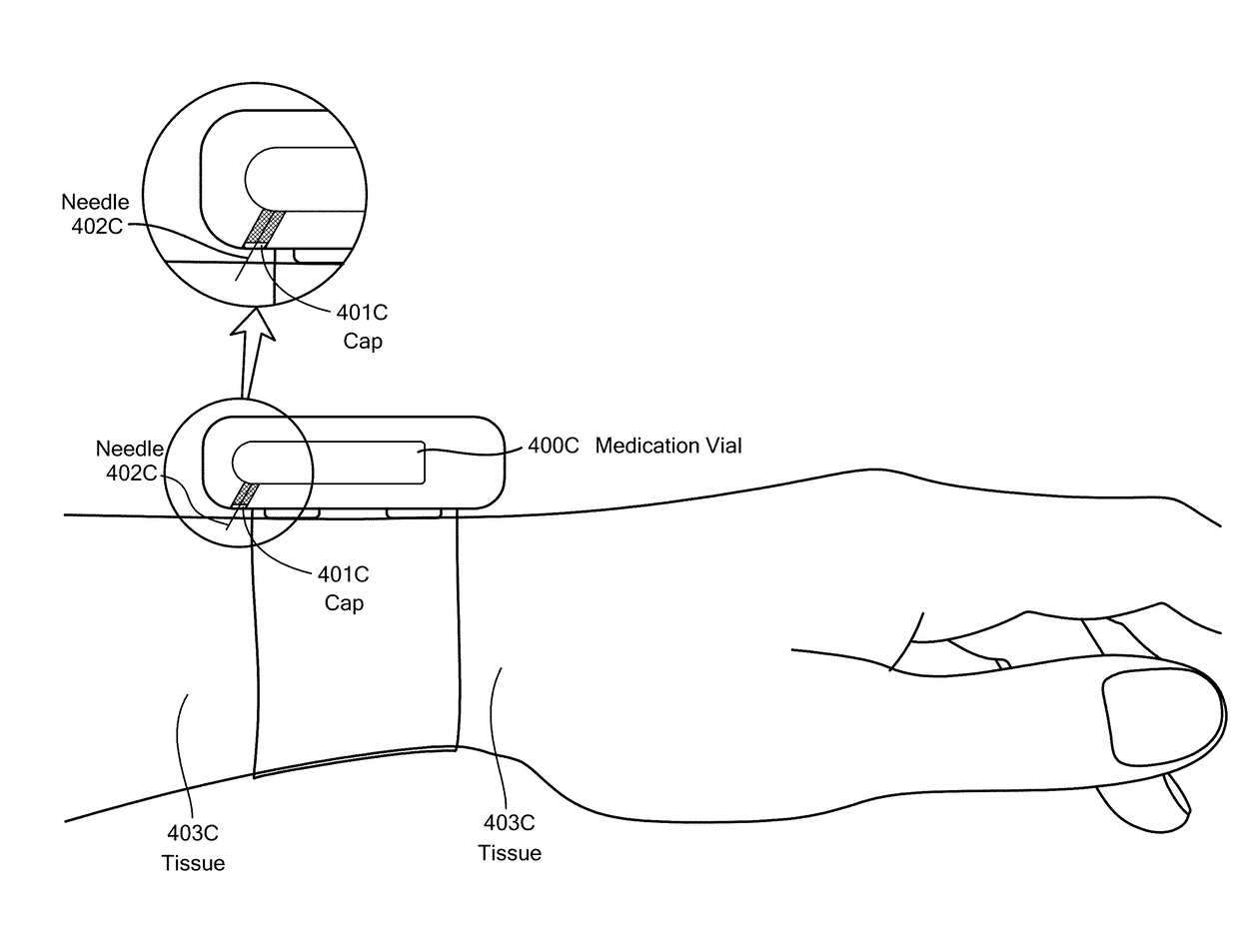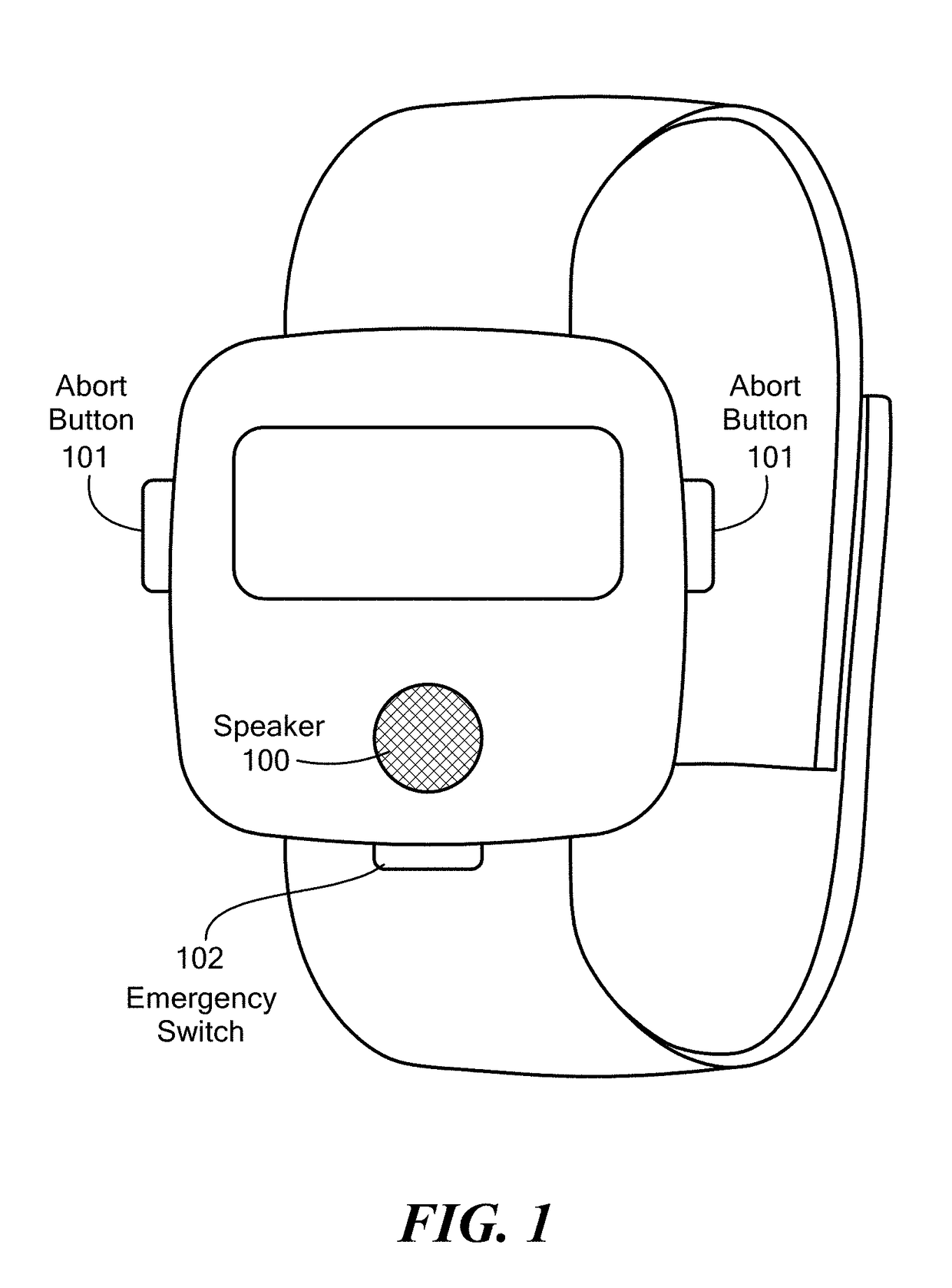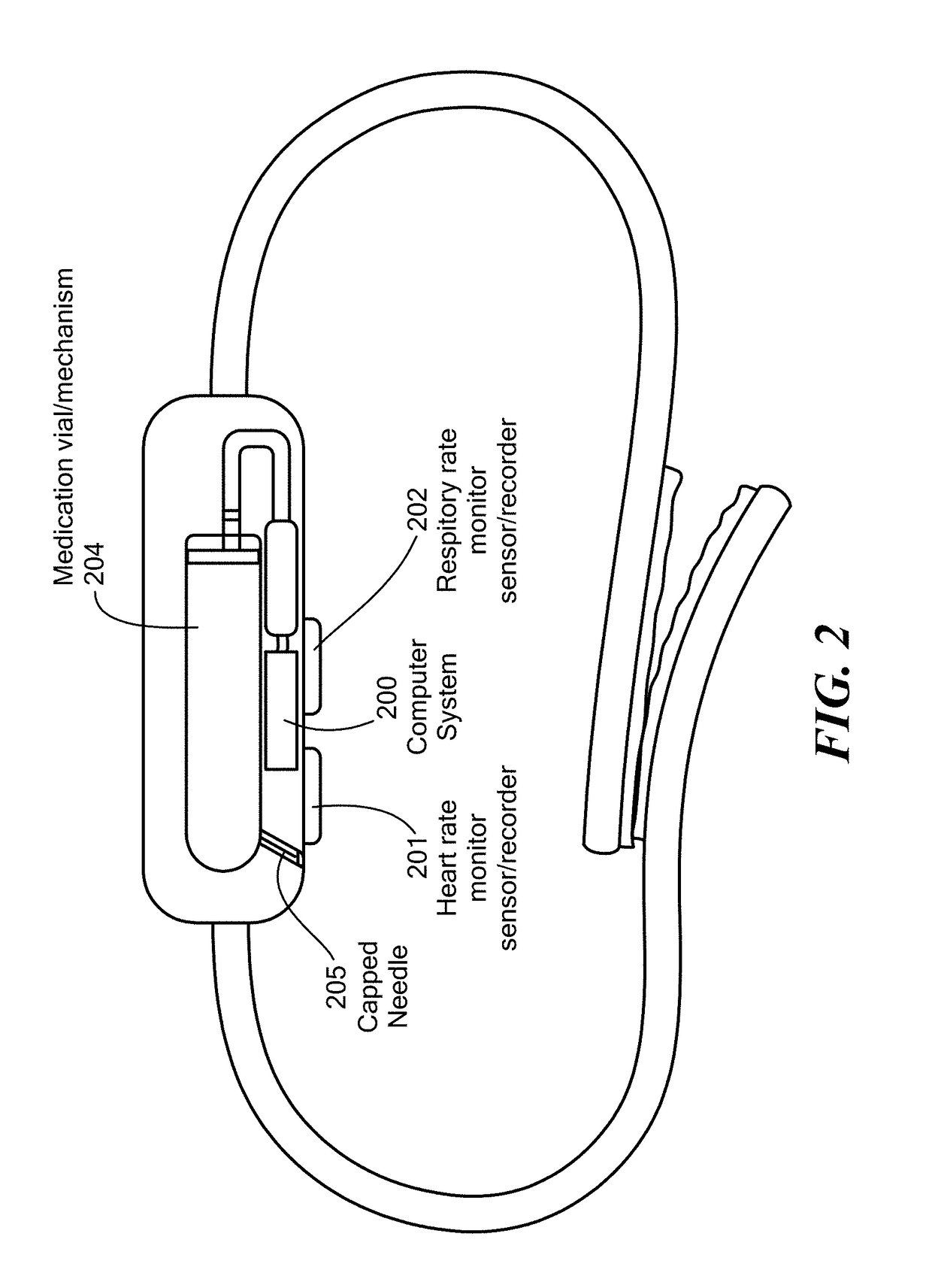Method and Device for Automatic Identification of an Opioid Overdose and Injection of an Opioid Receptor Antagonist
an automatic identification and opioid technology, applied in the field of automatic identification of opioid overdose and injection of opioid receptor antagonists, can solve the problems of cyanosis, organ damage and death, cyanosis, and pain in the opioid withdrawal process, and achieve the effects of reducing oxygenation, cyanosis, and cyanosis
- Summary
- Abstract
- Description
- Claims
- Application Information
AI Technical Summary
Benefits of technology
Problems solved by technology
Method used
Image
Examples
Embodiment Construction
[0033]As used in this description and the accompanying claims, the following terms shall have the meanings indicated, unless the context otherwise requires:
[0034]The term “wearable” shall mean the ability of the device to be attached to an individual at all times. The device can be worn in such a manner that it is portable so as to not interfere with or restrict daily activities.
[0035]The term “opioid receptor antagonist” shall mean a drug such that binds to the mu opioid receptor and inhibits or reverses the effects of opioid agonists such as heroin or other opioids. For example, the drug is naloxone.
[0036]The phrase “exceeds a threshold level” as used herein shall mean that value of the measured parameter at issue goes either above or below the accepted level for that parameter for a healthy individual or the baseline established for the individual for that parameter.
[0037]As used herein the phrase “measuring continuously or intermittently” shall mean measuring without any break o...
PUM
| Property | Measurement | Unit |
|---|---|---|
| time | aaaaa | aaaaa |
| time | aaaaa | aaaaa |
| time | aaaaa | aaaaa |
Abstract
Description
Claims
Application Information
 Login to View More
Login to View More - R&D
- Intellectual Property
- Life Sciences
- Materials
- Tech Scout
- Unparalleled Data Quality
- Higher Quality Content
- 60% Fewer Hallucinations
Browse by: Latest US Patents, China's latest patents, Technical Efficacy Thesaurus, Application Domain, Technology Topic, Popular Technical Reports.
© 2025 PatSnap. All rights reserved.Legal|Privacy policy|Modern Slavery Act Transparency Statement|Sitemap|About US| Contact US: help@patsnap.com



